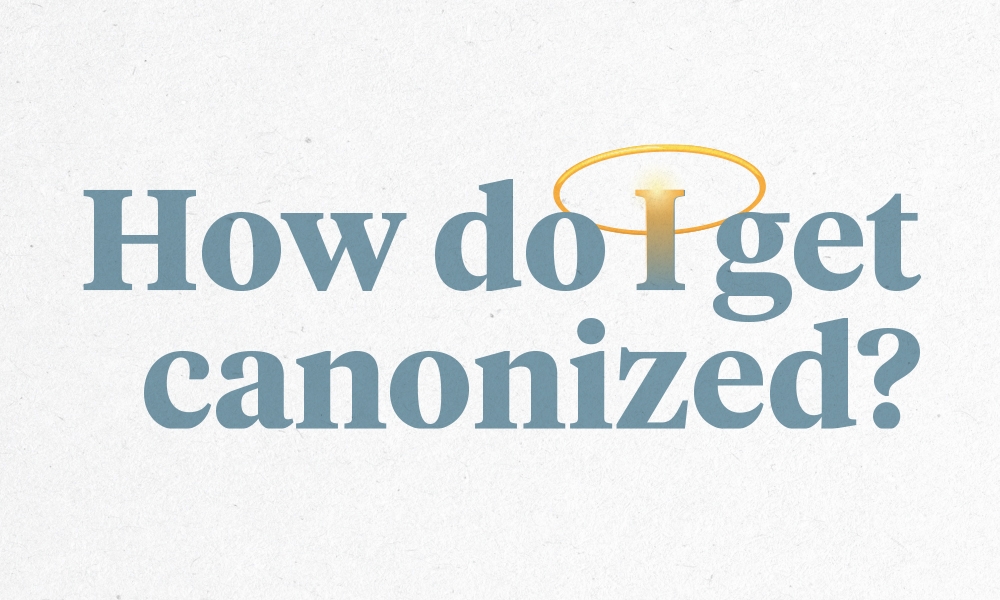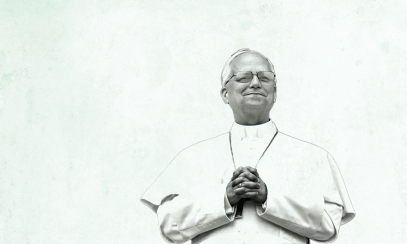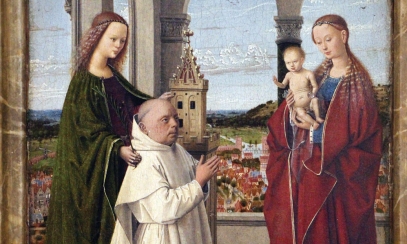
How do I get canonized?
The canonical steps to sainthood
The canonical steps to sainthood
As the Promoter of Justice for a cause for canonization, I have had the joy of learning the steps. You may find the following of some interest. The canonization process is governed not by the Code of Canon Law but by a lex peculiaris, a body of special pontifical law that begins with John Paul II’s apostolic constitution Divinus perfectionis Magister (1983) and is operationalized by the Normae servandae (1983). Subsequent directives such as Sanctorum Mater (2007) and Maiorem hac dilectionem (2017) refined the procedural details and added “offering of life” as a third path alongside martyrdom and heroic virtue. Together, these texts supply a juridical framework within which universal and particular norms converge. A causa canonizationis unfolds in two great movements, diocesan and Roman, each governed by precise procedural law.
A cause for sainthood cannot be opened unless a fama of sanctity, martyrdom, or life-offering, and a parallel fama signorum of answered prayers provide the requisite evidence. Once a bishop issues a decree of initiation, he instructs a four-stage canonical process: (1) preliminary formalities and the Holy See’s nihil obstat; (2) collection of documentary proofs, including theological review of published and unpublished writings; (3) sworn interrogation of witnesses under interrogatories prepared by the promoter of justice; and (4) publication of the acts with a declaration on non-cult. Two authenticated copies of the entire dossier are forwarded to Rome.
The Dicastery for the Causes of Saints first validates the local inquiry, then assigns a relator to guide preparation of the positio (the dossier), a critical synthesis of historical, theological, and juridical data. Historians evaluate documentary solidity; theological consultors verify doctrinal orthodoxy and evidence of martyrdom, heroic virtue, or life-offering; and finally, cardinal-members vote in ordinary session. Papal approval of their judgment produces the decree of martyrdom, heroic virtue, or oblation, conferring the title “Venerable.”
Beatification presupposes one post-mortem miracle for confessors and life-offerers but none for martyrs. The miracle is examined in a separate inquiry with its own tribunal, medical board, and theological commission; it must be scientifically inexplicable, instantaneous, perfect, and lasting, and clearly attributed to the candidate’s intercession. This divine attestation provides the “moral certitude” (a standard defined by Pius XII) that the human judgment on sanctity is sound. The papal decree of the miracle authorizes a limited liturgical cult (usually to the local diocese) and the title “Blessed.”
A second miracle occurring after beatification (or, in the case of martyrs, the first) is ordinarily required for canonization. Following a positive judgment by the dicastery and a papal consistory, the Supreme Pontiff issues an infallible decree, ordering universal cult and enrolling the Blessed among the saints. The canonization’s purpose is threefold: to offer the faithful models for imitation, heavenly intercessors for invocation, and subjects of liturgical veneration. Thus the Church, through careful procedural steps, confirms the heavenly glory of those whose lives manifested the Gospel in martyrdom, heroic virtue, or self-offering. Keep in mind, this is how to become canonized, not how to become a saint (reach the heavenly state), which is possible for all of us.
Father Mark Rutherford is a priest of the Diocese of Lansing and Judicial Vicar of the Archdiocese for the Military Services, USA. He is looking forward to addressing your questions related to canon law, our Catholic faith, and how we can live it out in our everyday lives. Please send your questions to faithquestion@dioceseoflansing.org.



